From October 2 to 10, 2021, Mercanteinfiera, an event now in its 40th edition aimed at all fans of antiques, vintage collecting and historical design, returns to the Parma Fairs. One can find here iconic objects of designer design, including Sottsass and Gio Ponti, vintage fashion signed by great designers such as Versace, Chanel, Hermès, and antique jewelry as well as watches signed Rolex, Vacheron Constantin, Audemars Piguet, and Patek Philippe.
Two side exhibitions are also planned during the days of the fair: one dedicated ... to the tie, and the other has to do with video games. A Man’s Backbone. History of the Tie showcases forty ties through which it is intended to pay homage to a cult accessory that has been present in men’s wardrobes (and beyond) for centuries. The ties on display tell the story of taste from the 1920s to the 1990s, through designs, sketches, jacquard paper masses, die cuts and ties of different shapes and sizes suitable for every occasion. It is also intended to highlight the historical vocation of Como manufacturing from craftsmanship to creativity. The exhibition is produced in collaboration with Paolo Aquilini, director of the Como Silk Museum, Fondazione Setificio, Associazione Allievi Setificio Como, Confartigianato Como, Associazione Italiana Disegnatori Tessili and Confindustria Como.
Back to the games, produced in collaboration with the Videoludic Archive of the Fondazione Cineteca di Bologna and the Bologna Nerd Association, instead traces in four stations the 1970s, 1980s, 1990s and 2000s, pivotal decades in the history of video games. Each station intends to immerse visitors in the atmosphere of each decade through themed furnishings and decorations, and you will also be able to play some of the video games on display (others will only be displayed inside display cases). For more information about the Mercanteinfiera and the two side exhibitions, you can visit www.mercanteinfiera.it
Mercanteinfiera can also be an opportunity to visit Parma and its most significant places to spend two or more days in the city and discover its beauties. What are the places not to be missed?
Piazza Duomo constitutes the centerpiece of the city. With a medieval layout, the city’s main religious monuments are gathered here, namely the Duomo with its high bell tower and the Baptistery. The Duomo is dedicated to Our Lady of the Assumption and is one of the most significant Romanesque-Paduan buildings in Italy. It was started to be built around 1059, but was consecrated in 1106. With a structure of three naves and a transept with side chapels, inside it holds masterpieces of great importance for the history of art, starting with the dome frescoed by Correggio between 1525 and 1530 and depicting the Assumption of the Virgin surrounded by apostles and angels and in the pendentives the patron saints. In the right transept, however, is Benedetto Antelami’s Deposition, the artist’s first known work, dated 1178. Next to the cathedral is the tall bell tower, erected between 1284 and 1294 and built of terracotta and stone profiles; on the spire is a gilded copper angel. The octagonal-shaped baptistery is clad in pink Verona marble; its construction began in 1196 and was completed in 1307 and represents the transition from Romanesque to Gothic. The façade is due to Antelami: along the basement is the zooforo formed by seventy-five panels carved in bas-relief, while the three monumental portals follow one another along the perimeter, namely that of the Virgin, that of the Redeemer, and that of the Baptist. Inside is the octagonal baptismal font and the cycle of the months and seasons, also by Antelami. Also in the same square is the Bishop’s Palace, originally from the 11th century.
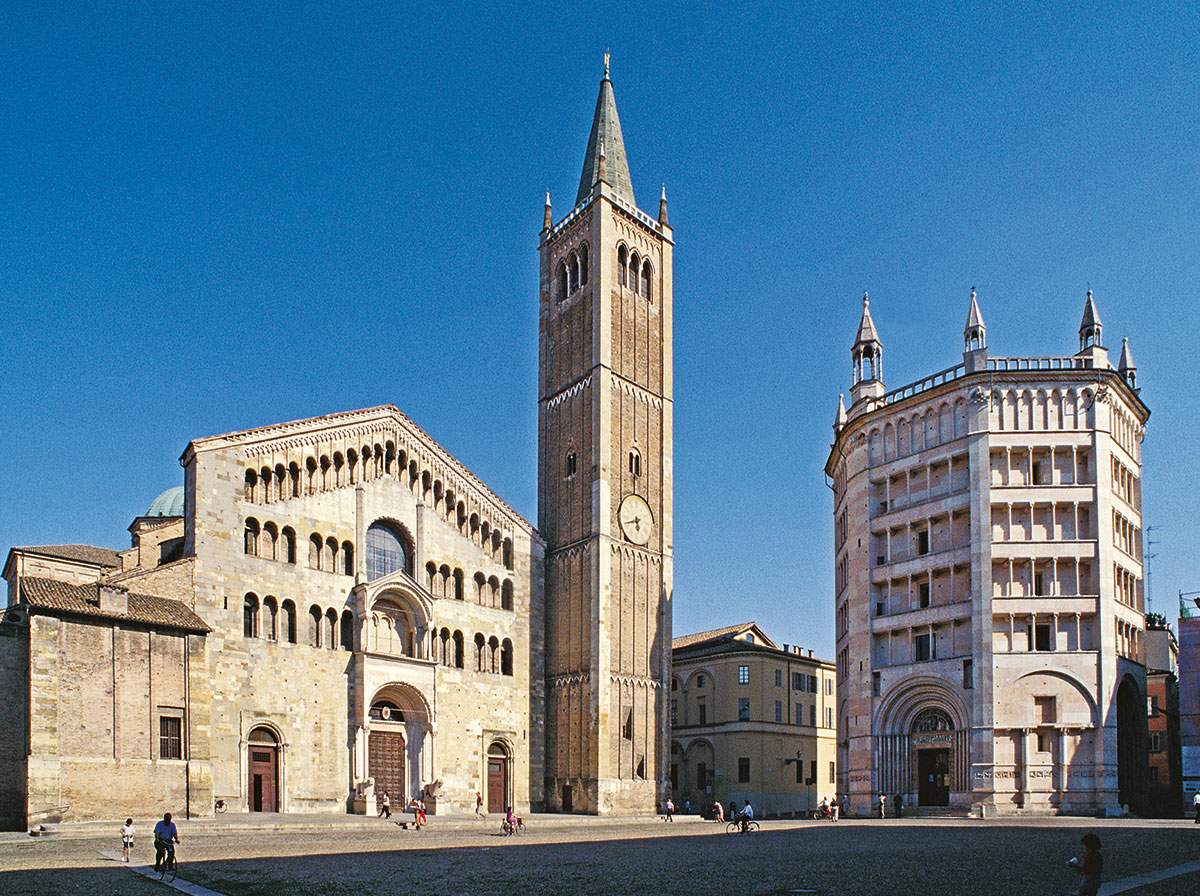
A symbol of the ducal power of the Farnese family, the Pilotta is the most important museum complex in Parma and includes the National Gallery, the National Archaeological Museum, the Palatina Library, and the Farnese Theater. The National Gallery was established by the Dukes of Parma and enriched through the acquisitions of Maria Luigia of Austria, to whom we owe the collection. Masterpieces by Correggio, Parmigianinno, Carracci, Guercino, Bronzino, Domenichino, Tintoretto and many other artists of Emilian, Neapolitan and Venetian painting are preserved here. Among the most important works are the Scapigliata attributed to Leonardo da Vinci and the Turkish Slave by Parmigianino.
The Teatro Farnese was built by Giovan Battista Aleotti in 1618 at the behest of Ranuccio Farnese to celebrate Cosimo de’ Medici’s stay in Parma. However, its inauguration took place in 1628, on the occasion of the wedding between Margherita de’ Medici and Duke Odoardo. It is one of the largest Baroque theaters in Europe with a structure inspired by the models of Greek and Roman theaters; built of wood, it was an example of uniqueness in some respects, such as the movable stage structure and the system of flooding the cavea to stage naumachiae. Today the stucco and decorations that covered the wooden structure are no longer visible due to a bomb that destroyed it. It was then rebuilt in its structure according to Aleotti’s original designs.
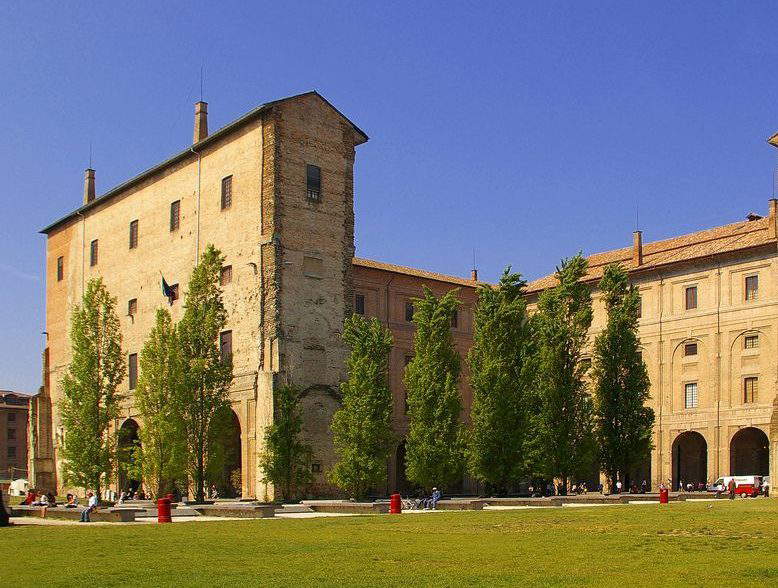
The construction of the Basilica of Santa Maria della Steccata was due to Bernardino and Giovanni Francesco Zaccagni: with a central Greek-cross plan, it was built between 1521 and 1539 and is one of the most significant Renaissance sites in the city. Its name refers to the presence of a fence around the building that served to regulate the flow of pilgrims who came to worship a nursing Madonna that was located on the facade of the oratory. And the present basilica was erected precisely to guard that precious Virgin. One of Parmigianino’s most famous works is preserved inside: The Wise Virgins and the Foolish Virgins, a large fresco datable between 1531 and 1539.
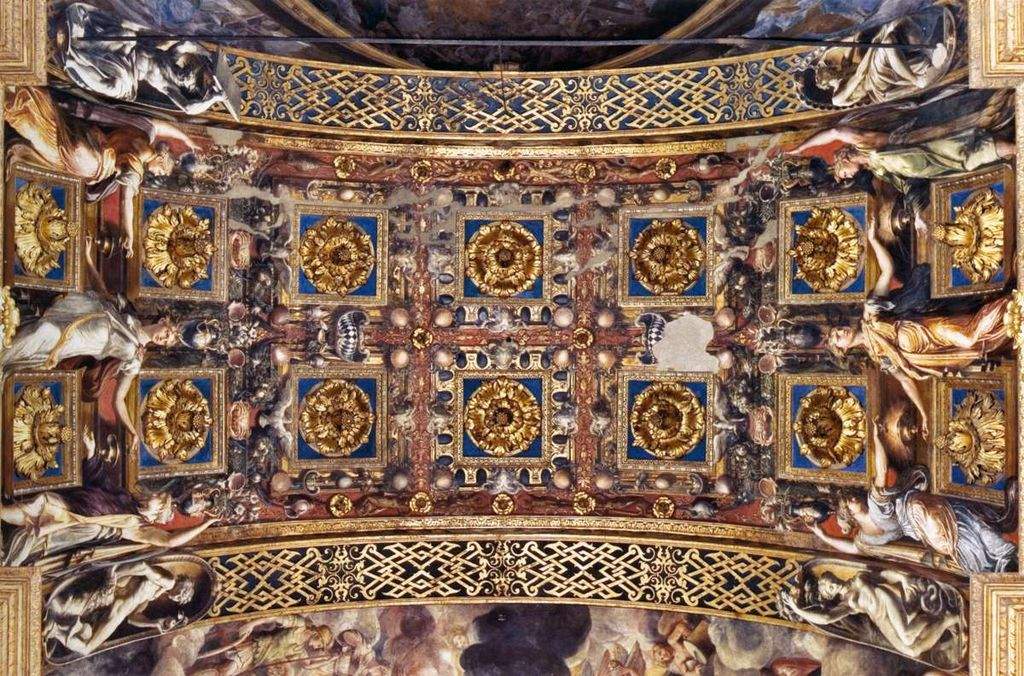
The Camera della Badessa, also known as the Camera di San Paolo, is part of the former monastery of the Benedictine nuns. Its name is linked to the Abbess Giovanna da Piacenza. The room preserves one of Correggio’s masterpieces, namely, the decoration of the vault: the artist painted a berceau with intertwining vegetal patterns, dividing the vault into sixteen segments from which putti with allegorical symbols of hunting appear; these are accompanied by vegetal elements with branches and leaves. In the center of the vault is the triple lunar coat of arms of the Abbess. Characters from mythology are then depicted in the lunettes. Through this pictorial device, Correggio nullifies the architectural space, making the room very evocative and in line with the neo-Platonic culture of the time.
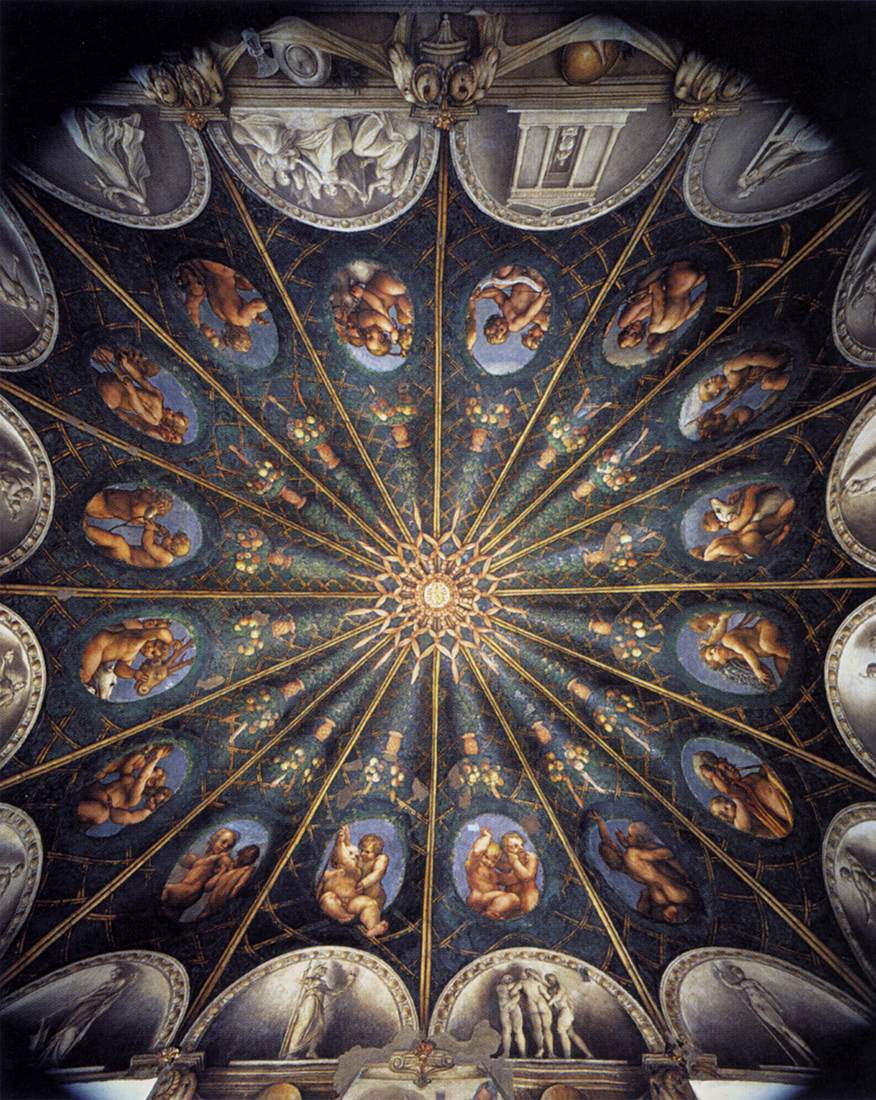
Consisting of centuries-old trees, the Ducal Park features sculptural groups by Frenchman Jean-Baptiste Boudard active in Italy in the 18th century, among which the Silenus group stands out. Inside are the ancient Ducal Palace and the Renaissance Palazzetto Eucherio Sanvitale. The Ducal Park is the city’s historic park, located in the Oltretorrente district near the Parma stream, and the idea of creating a park in this area is due to Duke Ottavio Farnese to immerse the new residence in greenery.

Erected at the behest of Maria Luigia of Austria, the Teatro Regio was built between 1821 and 1829. It features a neoclassical facade with a portico with a double row of windows, while the decorations depict Fame and Lyra. Inside is the elliptical stalls decorated by Girolamo Magnani in 1853 surrounded by four tiers of boxes and the gallery. The chandelier, weighing a ton, was made in Paris. It is here that the Opera Season and the Verdi Festival are held each year, events that testify to Parma’s strong connection with music and involve internationally renowned artists.

Piazza Garibaldi is the center of city life, the city’s living room. The current appearance of the square is the result of several phases that concentrated the forms of municipal power here. The former Piazza Grande is overlooked by the Palazzo del Comune, the Palazzo del Governatore and the church of San Pietro, as well as the cafes and stores that make this square the liveliest center of Parma. The dedication to the hero of two worlds dates back to 1893, at which time a statue of Garibaldi was erected to replace the Bourbon monument of Ara Amicitiae.
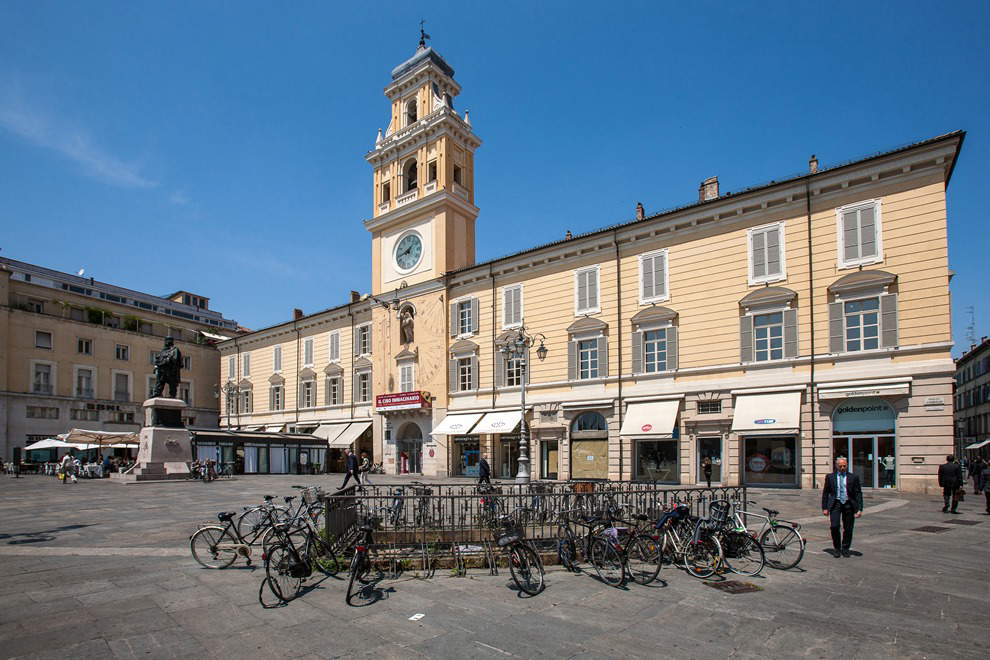
Giuseppe Stuard, a philanthropist and collector who lived at the turn of the 18th and 19th centuries, is credited with the collection that gave rise to the picture gallery. This includes paintings, archeologiic finds, frescoes, engravings, sculptures, medals, furniture and objects ranging from the fourteenth to the twentieth century. Among the works preserved are masterpieces by Annibale Carracci, Mattia Preti, a drawing attributed to Parmigianino depicting a greyhound, which has become the symbol of the picture gallery; and also, nineteenth-century artists associated with the Academy of Fine Arts of Parma. Opened in 2002, the Stuard Picture Gallery is located in part of the former Benedictine monastery of San Paolo. In fact, the first room opens onto the Sacello di San Paolo, the first architectural nucleus around which the monastery was built.
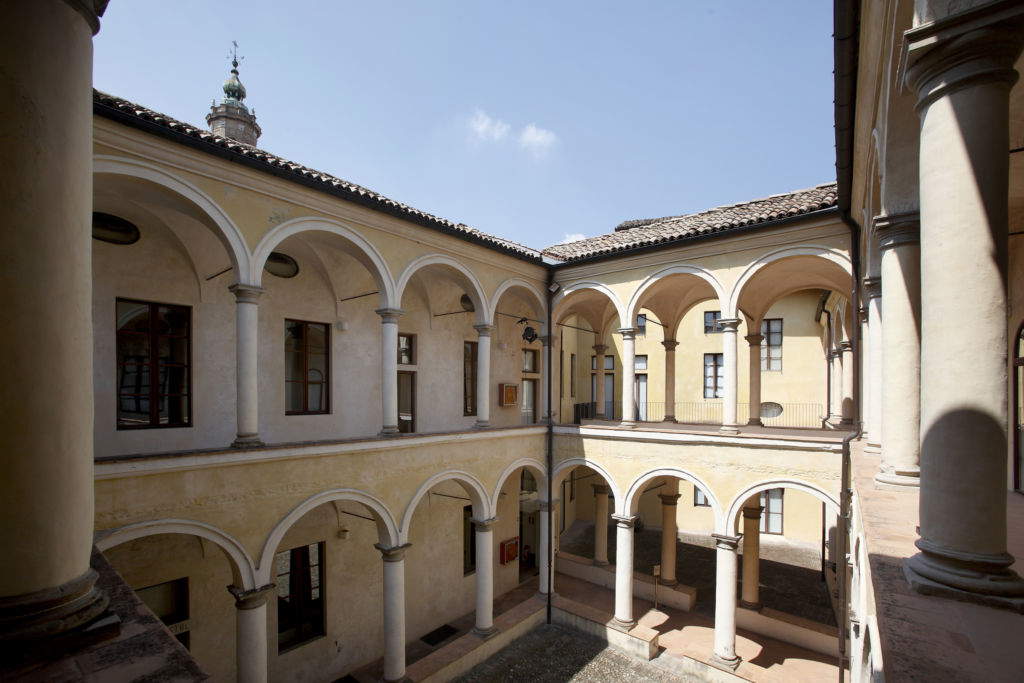
This is a historic apothecary shop, a particular example of a pharmacy, probably opened in 1201. It is located inside the convent of San Giovanni and consists of three rooms, with furnishings from the 16th-17th centuries. The Sala del Fuoco shows the delivery counter with a precision scale; the Sala dei Mortai is frescoed with depictions of masters of ancient medicine; and the Sala delle Sirene brings together documents by Parma masters of medicine and pharmacy. Vases of different sizes, flasks, tankards and mortars from various periods and origins are also preserved.

Near the Palazzo della Pilotta is the Piazzale della Pace. Designed by architect Mario Botta, it houses the Monument to Giuseppe Verdi by Ettore Ximenes in its spaces. It is an early 20th-century altar made to a design by Lamberto Cusani. What is currently visible is a recomposed fragment of the monument erected earlier in the vicinity of the station and destroyed by bombs in World War II. The scenes depicted evoke works and episodes from the life of Giuseppe Verdi.
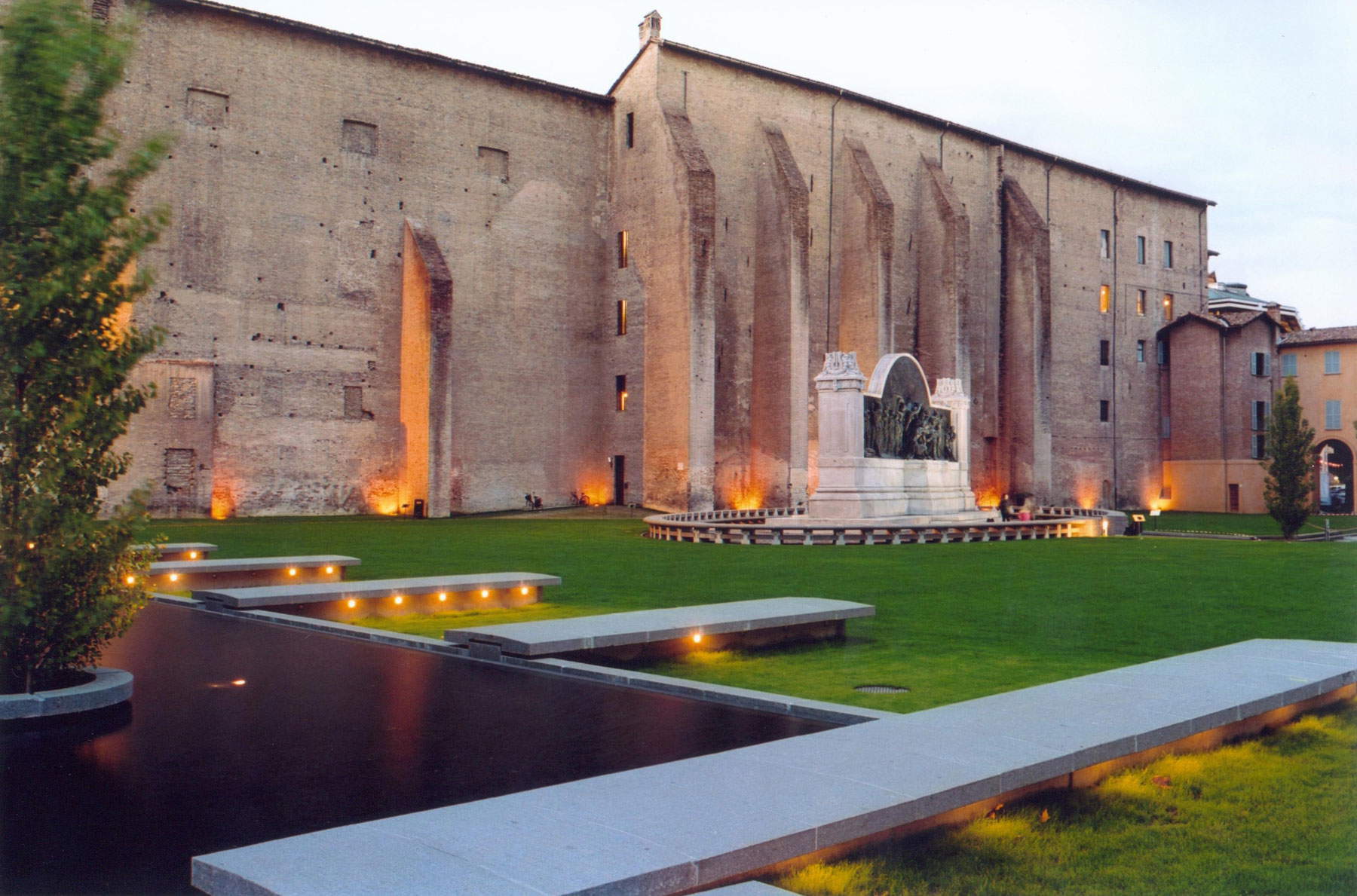
 |
| 10 places to see in Parma during Mercanteinfiera |
Warning: the translation into English of the original Italian article was created using automatic tools. We undertake to review all articles, but we do not guarantee the total absence of inaccuracies in the translation due to the program. You can find the original by clicking on the ITA button. If you find any mistake,please contact us.